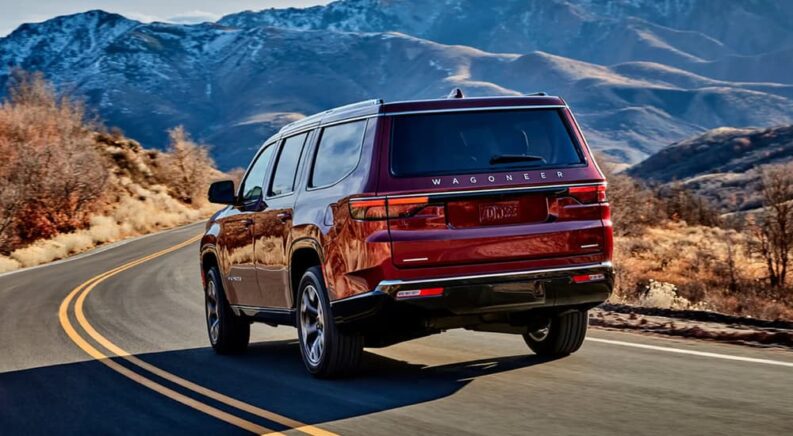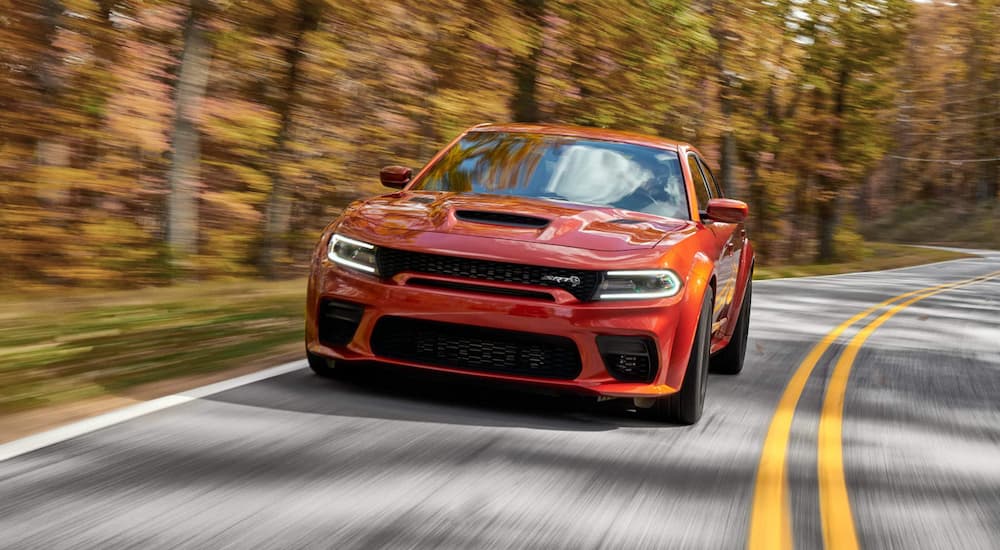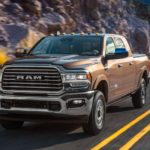HEMI fans, I’ve got bad news for you. The engine you love is dead, sorry ‘bout it. Last year, Stellantis—the parent company of Chrysler, Dodge, Jeep, Ram, Wagoneer, and many more—finally unveiled the Hurricane engine that had been in the works for a long time. Whether or not it has lived up to the hype and was worth the effort is still being debated, but the specs make it clear that by pretty much every conceivable metric, it’s superior to the HEMI engines we’ve known and enjoyed for so long. There’s no doubt that the new engine is meant as a HEMI killer, and I’d say we’re already hearing the death knell of the legendary V8.
Is this necessarily a bad thing? Once again, this is quite subjective and largely up for debate, but that’s exactly why we’re here—to talk about this new engine. Whether you’re interested in a Wagoneer for sale, thinking about your next Ram truck, or wondering what kind of power Dodge is going to roll out in the years ahead, it’s worth considering what’s come before, where we’re at now, and what’s to come in the future. The one thing that seems certain is that the HEMI engines are about to get swept away by a Hurricane, which in turn will be replaced by zero-emission options in the not-too-distant future.
A Look Back at the HEMI
The term “HEMI” refers to a hemispherical combustion chamber on an engine, something that’s not unique to models like Ram trucks or Dodge muscle cars but has become particularly associated with those brands. This is because Chrysler really latched onto this engine design and eventually trademarked HEMI as its specific term. Essentially, the combustion chamber is where the main action happens in an internal combustion engine, with a cylinder and a cylinder head at the top of it. In a hemispherical combustion chamber, the head is a dome that’s roughly hemispherical in shape, hence the name.
Chrysler didn’t invent the concept, with examples known from at least 1901 and used in a number of race cars throughout the early 1900s, particularly in other countries. This shape offers impressive performance and low heat loss thanks to its design, but it’s typically rather heavy. Chrysler’s first recorded use of this engine design was an effort to build a new engine for the P-47 Thunderbolt, a World War II fighter plane built by Republic Aviation. The war was over before the engine was ready for production, but it provided information that Chrysler would use in the following years.
The first Chrysler engine to use this hemispherical design was the FirePower series. Released for the 1951 model year and used on the Chrysler Imperial and Saratoga that year, the Dodge C Series starting in 1954, and more. A second-generation hemispherical engine hit the scene in the 1960s, and this was the first one that used the HEMI name, launching the legendary engine we know and love today. These engines were found in the Dodge Coronet, Charger, Challenger, and more models into the early 1970s.
After taking a break from this wonderful engine for a couple decades, we saw it return in the modern era with the third-generation HEMI that hit the scene with the 2003 Dodge Ram trucks (it was still the Dodge Ram back then). In the following years, it quickly became available on other models like the Jeep Grand Cherokee, the Dodge Charger, and more. High-performance, supercharged versions like the Hellcat and Demon have been offered on select models, though there are two main options today: the 5.7L HEMI V8 and the 6.4L HEMI V8.
The Modern HEMI Engines
Now that we’re caught up, this brings us to the modern era, where these HEMI V8 engines have been the reigning kings in the Stellantis lineup (including models like the Dodge Challenger, Ram pickup, Jeep Grand Cherokee, Grand Wagoneer, and more). Not only is the HEMI name closely associated with the brand’s most powerful vehicles, but its performance has also been quite brag-worthy for a couple decades. Consider what these engines can do at their best:
5.7L HEMI V8
- 395 hp
- 410 lb-ft
6.4L HEMI V8
- 485 hp
- 475 lb-ft
That’s great, right? Those numbers are quite impressive for engines that aren’t turbocharged or supercharged. Add forced induction, and the 6.2L Demon can deliver 1,025 hp and 945 lb-ft of torque. However, these engines are not fuel efficient and are relics of past design, making it difficult to incorporate modern technologies like hybridization and electrified performance. The eTorque mild hybrid system has worked so far for Ram trucks, but it was a stop-gap.
The Hurricane Makes Landfall
This is where the new Hurricane engine comes into play. For years, the engineers at Stellantis have been working on a new power plant that would be entirely modern. They freed themselves from the constrictions of trying to stick to a traditional V8, resulting in the Hurricane engine series. Finally unveiled last year, these engines are meant to be more powerful, lighter, and more efficient. Perhaps most importantly, they’re designed for future additions and changes, including hybridization. Just look at the specs on the two versions of the 3.0L twin-turbo I-6 Hurricane engine that are now offered on the 2023 Wagoneer and Grand Wagoneer:
3.0L Hurricane Standard Output
- 420 hp
- 470 lb-ft
3.0L Hurricane High Output
- 510 hp
- 500 lb-ft
A quick glance back up at the HEMI engines available right now makes it pretty clear why people are excited about these Hurricane beauties—including the folks at Ram, Dodge, and Jeep. You’re looking at about half the displacement, with greater horsepower and torque to take advantage of. Plus, these engines are more efficient. Right now, they’re boasting a 1.3 to 1.7 L/100 km edge over the HEMI in the Wagoneer and Grand Wagoneer, which is likely to grow as hybrid versions of these engines become available. Because that’s the thing: these numbers are for the Hurricane engines right out the gate—with future models and engineering, they’re likely to just keep getting better.
What Does the Future Hold?
I’ll be honest: it’s a little weird to talk this much about internal combustion engines with so much attention and energy being put on hybrids and electric vehicles these days. Even from Stellantis, we’re seeing a lot of focus on the current and upcoming plug-in hybrid and all-electric options. The most prominent models with the new Hurricane engines are the Wagoneer and Grand Wagoneer. In fact, the HEMI V8 options are already being phased out across Wagoneer’s 2023 lineup.
Yet Stellantis recently teased an upcoming all-electric Wagoneer S model that will leave these engines behind completely in favour of zero-emission performance. One thing is clear: the HEMI is on its way out. You can already see this with the 2023 Wagoneer and Grand Wagoneer models, and that is just the start. Dodge is dropping the HEMI after this year, and there are hints that Ram is planning to follow suit, at least on the light-duty Ram 1500. It seems that soon, all the Stellantis brands will have the Hurricane engines as their pinnacle options. No one can say when this will happen for certain, but it seems clear that things are changing, and the HEMI will once again simply be a memory.






